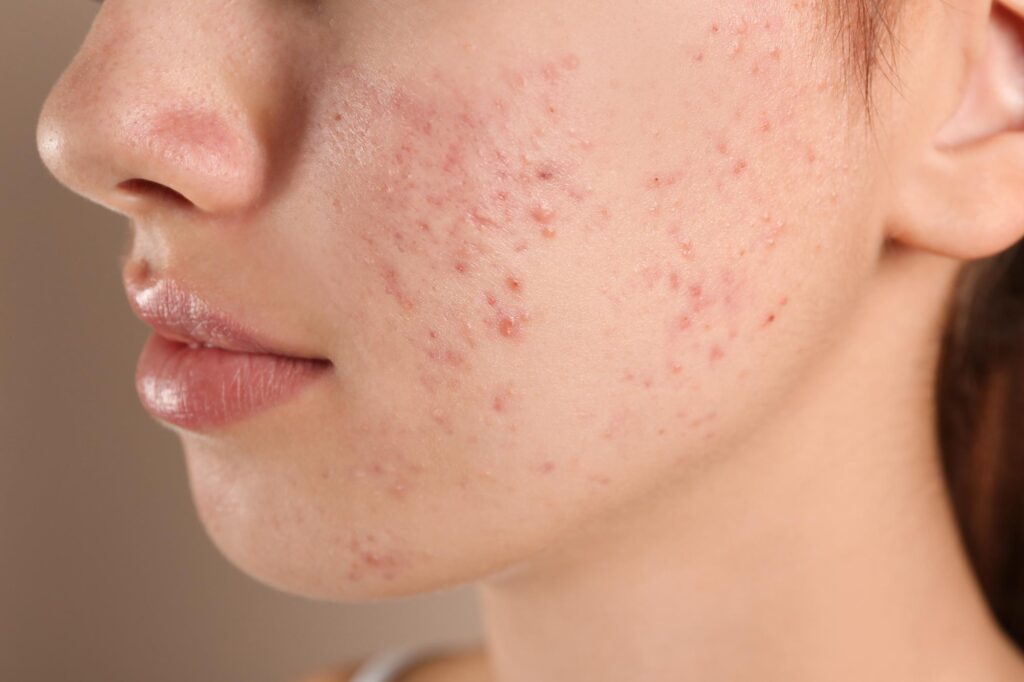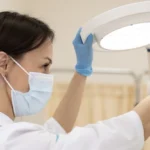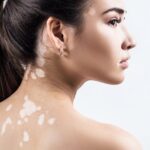Benefits of UVB for Acne Treatment
Ultraviolet B (UVB) light has been gaining attention in dermatology, particularly for its potential benefits in treating acne. This spectrum of light therapy targets the sebaceous glands, which are responsible for oil production in the skin. By reducing the activity of these glands, UVB light helps to lessen the occurrence of clogged pores and, consequently, acne breakouts. Additionally, UVB light has been shown to possess bactericidal properties, effectively reducing the presence of Propionibacterium acnes, the bacteria often associated with acne.
Furthermore, this form of light therapy can also reduce inflammation and promote the healing of acne lesions, leading to clearer skin over time. While more research is needed to fully understand the long-term effects, UVB therapy represents a promising, non-invasive option for individuals struggling with acne.
Acne vulgaris
Acne vulgaris is a common dermatological condition that affects millions of individuals worldwide, often leading to physical discomfort and psychological distress. Traditional acne treatments range from topical applications, such as benzoyl peroxide and retinoids, to systemic therapies like antibiotics and hormonal treatments. However, ultraviolet (UV) light, specifically UVB, has recently emerged as a potential therapeutic avenue.
How UVB Light Works
UVB light, part of the ultraviolet light spectrum, has wavelengths between 280 and 320 nanometers. It penetrates the top layers of the skin, specifically the epidermis, where it can exert multiple beneficial effects:
- Reduction of Sebum Production: One of the primary contributing factors to acne is excessive sebum production by the sebaceous glands. UVB light therapy has been shown to downregulate sebum production, reducing the oily environment that facilitates the proliferation of acne-causing bacteria like Propionibacterium acnes.
- Anti-inflammatory Effects: UVB exposure can reduce inflammation, a key feature of many acne lesions. The anti-inflammatory properties arise from the modulation of the immune response and reduced production of inflammatory cytokines. Lower levels of inflammation contribute to less redness and swelling, improving the overall appearance of acne-prone skin.
- Antibacterial Properties: UVB light has a direct bactericidal effect on Propionibacterium acnes, the bacteria responsible for the inflammation and infection associated with acne. By reducing the bacterial load, UVB light helps in controlling the infection and preventing further breakout episodes.
- Cellular Turnover and Exfoliation: UVB therapy can stimulate faster cellular turnover, promoting the shedding of dead skin cells. This helps unclog pores, which are a crucial factor in the formation of acne comedones (blackheads and whiteheads). Enhanced exfoliation results in smoother skin and fewer clogged follicles.
Clinical Evidence and Studies
Several clinical studies underscore the efficacy of UVB light in the treatment of acne. One such study revealed that patients undergoing UVB phototherapy experienced a significant reduction in acne lesions compared to those who did not receive the treatment. Participants also reported improvements in skin texture and a reduction in scar visibility.
Another study indicated that combining UVB light therapy with other standard acne treatments could enhance overall treatment effectiveness. Patients who received both UVB therapy and topical retinoids noted more rapid improvements and sustained relief from acne symptoms.
Safety and Side Effects
While UVB phototherapy demonstrates promising benefits, it is essential to consider its safety profile. Excessive or improper use of UVB light can lead to adverse effects such as:
- Skin Burns: Overexposure to UVB can cause erythema or skin burns, reminiscent of severe sunburn.
- Skin Aging: Chronic exposure can accelerate skin aging, manifesting as wrinkles and fine lines.
- Hyperpigmentation: UVB light can exacerbate hyperpigmentation in certain individuals, particularly those with darker skin tones.
- Carcinogenesis: Although the risk is relatively low with controlled usage, prolonged exposure to UVB has been linked to skin cancer development.
To mitigate these risks, it is vital to administer UVB phototherapy under the supervision of a qualified dermatologist. Proper dosage and controlled exposure times are crucial to harnessing the treatment’s benefits while minimizing potential side effects.
Comparing UVB with Other Light Therapies
UVB is not the only light therapy utilized in acne treatment. Others include blue light and red light therapies. Here’s how UVB stacks up:
- Blue Light Therapy: Targets Propionibacterium acnes directly, similar to UVB, but primarily affects the bacteria without as much penetration into the skin layers. It is often used for mild to moderate acne and is notable for its high safety profile, with minimal risk of sunburn or skin aging.
- Red Light Therapy: Known for its anti-inflammatory properties, red light therapy penetrates deeper into the skin than blue light and UVB. It is beneficial for reducing redness and inflammation associated with acne and stimulating collagen production, aiding in scar reduction.
While blue and red light therapies offer significant benefits, UVB treatment has a comprehensive impact by combining antibacterial, anti-inflammatory, and sebum-reducing effects, making it a versatile option for acne management.
Practical Application of UVB Therapy
When considering UVB therapy for acne, it typically requires multiple sessions over several weeks or months. The exact regimen depends on the severity of the acne and individual skin responses. Sessions might be conducted in a medical setting using specialized phototherapy equipment, or with at-home devices approved by healthcare providers.
Consistency is pivotal for achieving results; irregular treatment schedules may lead to suboptimal outcomes. Patients should adhere to guidelines provided by their healthcare professionals to ensure both efficacy and safety.
Psychological Benefits
Beyond the physical improvements, UVB therapy can yield significant psychological benefits. Acne often leads to low self-esteem, social withdrawal, and even depression. Effective UVB treatment can dramatically enhance skin appearance, which in turn boosts confidence and improves the quality of life. Patients frequently report feeling more comfortable in social situations and experiencing a greater sense of well-being post-treatment.
Future Directions and Research
The promising results of UVB therapy for acne treatment have spurred ongoing research into optimizing its use. Future research may focus on:
- Identifying Optimal Wavelengths: Investigating which specific UVB wavelengths provide the most significant benefits while minimizing side effects.
- Combination Therapies: Researching how UVB therapy can be most effectively combined with other treatments, such as topical agents or systemic medications, to enhance overall treatment outcomes.
- Long-term Safety Studies: Conducting extended studies to fully understand the long-term impacts of UVB therapy on skin health and its potential risks.
Conclusion
UVB therapy has emerged as a potent tool in the arsenal against acne, demonstrating multifaceted benefits ranging from reducing sebum production and inflammation to destroying acne-causing bacteria. While it offers significant advantages, it is essential to use UVB therapy judiciously to avoid adverse effects. As research continues to evolve, UVB phototherapy may well become a cornerstone in managing acne, offering hope to millions seeking effective and safe treatment strategies.

Silvia Malgot is a renowned author and expert in the fields of skincare and beauty, with over a decade of experience researching and writing about effective treatments, holistic approaches, and innovative technologies. Her passion for empowering individuals to feel confident in their own skin has driven her to explore cutting-edge solutions and timeless traditions in skincare.
Silvia has contributed to several leading health and beauty publications, providing insights into trends, product recommendations, and practical advice grounded in science. Her approachable yet detail-oriented style has made her a trusted voice for readers seeking clarity in an overwhelming industry. When she’s not writing, Silvia actively participates in workshops and seminars, sharing her knowledge and inspiring others to prioritize self-care through sustainable, informed practices.


